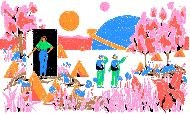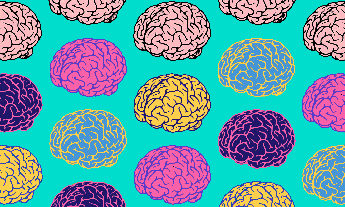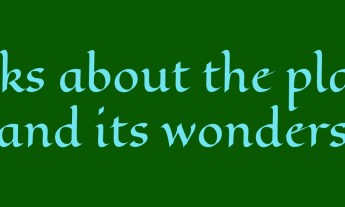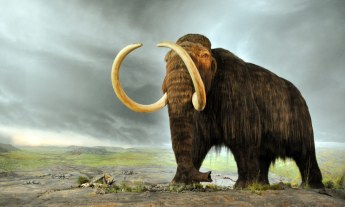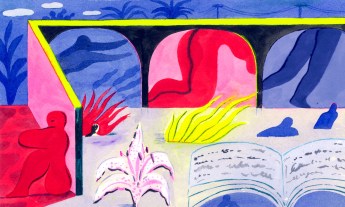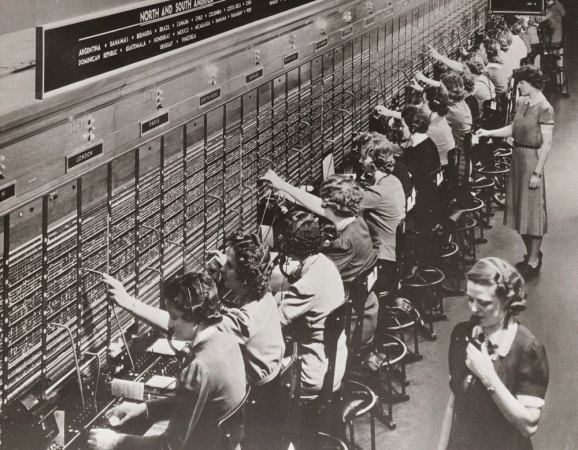
What will it mean when almost anyone can read and understand the world and everything on it, in it, and above it — in real time, at will? Andrew Blau investigates.
Technology advances over the last 30 years mean that we have crossed an invisible threshold: for the first time in human history, we now live on a legible planet. What will blow our minds in the next 30 years is what it will mean when almost anyone can read and understand the world and almost everything on it, in it, and above it — in real time, at will.
400 years ago, Galileo took a new technology, turned into the night sky, and saw something that until that moment had been impossible for humans to see. The implications were profound for science, for religion — and ultimately, for society. Because he hadn’t just seen some of Jupiter’s moons. Over a few weeks in early 1610, equipped with a telescope and a notebook, he had made the heavens more legible than they had ever been. And once you can see things you have never seen, you can understand things no one has ever understood and do things that no one has ever done.
Today, we are in the infancy of a fundamentally new relationship with the planet and everything on it. Thanks to increasingly ubiquitous and cheap networks, sensors, satellites, cell phones, cameras, RFID tags, databases, digital storage and computing power, we can now read and understand the world around us with ever better clarity, often in real time. We can see the flow of people, resources, materials, goods, information, money, pollution, and more — from beneath the surface of the earth to the stratosphere, and from the microscopic to the global. And it’s not just a single Galileo with a rare technology who can do this; it’s going to be billions of us.
You probably already take for granted that you can sit in Vancouver and check the traffic at this very instant in San Francisco, Mumbai, Shanghai or Kiev. But make that industrial strength: companies can watch the global flow of goods being shipped right now by virtually every major supplier and shipper, often providing more accurate and timely data about global trade than anyone has ever had. LiDar has changed how scientists can see beneath the canopy of rain forests to survey and map features of the earth that have never been seen before. Engineers at workstations in Silicon Valley can tell farmers on tractors in Salinas about the moisture in their soil on a meter-by-meter basis. Any of us with access to the Internet can find out exactly where satellites are in the sky above, or know about the planes in flight in our airspace. Whether we’re looking up, down, out, or in, at any distance and at almost every scale, we can see more than humans ever have. Add in exponential growth in the power of sensors and networks, doubling perhaps 15 more times in the next 30 years, and the implications are unimaginable.
Data doesn’t just come from traditional sensors or eyes in the sky. We’re increasingly the contributors as well as the beneficiaries. One startup is integrating traditional sources of online information with data sent in by people with smartphones to track food prices in 25 cities. This will allow them to identify price jumps in distant markets long before they show up in government reports. Thanks to the falling price of genetic testing and sequencing, more people are now able to see their own genetic information. That’s personal legibility, but the legibility of populations will also change. Consider: Muhammad Ali has partnered with 23andme to ask people with Parkinson’s disease to contribute their genetic data to a shared database. Over 10,000 people are participating already; the result is vastly increased legibility of the genetic material associated with the disease.
Of course, being able to read almost every system at any distance at just about any second will bring some major challenges. When global systems can connect location, history, social networks, biology and behavior in real time we may long for the relative simplicity of today’s privacy challenges. We will no doubt discover significant risks and weak points in systems that we’ve always taken for granted. We’ll see phantom connections everywhere, and the ground for conspiracy theories will be rich. And we may simply drown in new details, struggling to get back up to the larger perspective and broader view that makes “seeing the big picture” an enduring metaphor for real understanding.
Yet the transformative possibility remains that we will see the big picture with more clarity and resolution than ever before. Whether for good or ill (and surely it will be both), ever greater legibility of everything around us, between us, and even in us, and in every system from the physical to the social, financial, commercial, environmental and more is going to transform our relationship to the world, each other and to every system of which we are part. Billions will have access to it, innovate on it and benefit from it. It will change health care and education, drug discovery and agriculture, mobility and work. It will change how every business operates, how governments govern, and how the social sector makes the world better. Living on the Legible Planet will blow our minds — and if we want to, we’ll find a way to make that legible too.
Andrew Blau is a managing director at Deloitte.
Photo: Flickr Commons





